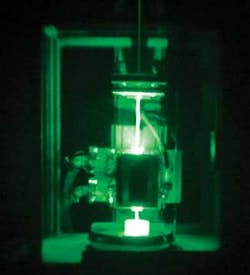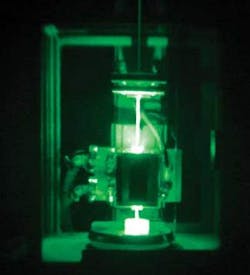Photonic laser thruster produces 35 µN of thrust
Last year, Young K. Bae, president and chief scientist of the Bae Institute (Tustin, CA), proposed a photon-tether-formation-flight (PTFF) system that was designed to enable intersatellite nanometer-scale distance accuracy at maximum distances on the order of tens of kilometers for satellites flying in formation (see www.laserfocusworld.com/articles/259915). Now, Bae has demonstrated the first photonic laser thruster (PLT) that generates amplified thrust between two spacecraft by bouncing photons many thousands of times between two mirrors.
The patent-pending PLT was built and tested using off-the-shelf components. With an amplification factor of 3000, the photon thrust generated from the egg-size laser head in the PLT prototype is equivalent to the thrust that can currently only be generated by orders-of-magnitude larger and heavier industrial or weapons-grade lasers. By integrating PLT and space tethers, PTFF can potentially enable the creation of large telescopes and synthetic apertures in space for high-resolution Earth or space monitoring. The maximum photon thrust was demonstrated to be 35 µN, which is already close to that required for many envisioned space missions. Contact Young K. Bae at [email protected].

